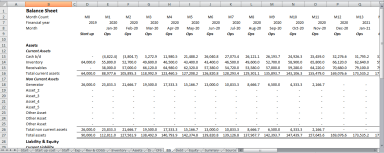
Publication number: ELQ-24669-1
View all versions & Certificate

Product wholesale/retail small business model
Model for startup small business into sales of product in wholesale or retail.
Further information
To create a model that can easily be understood and used without much assistance both in business and learning
If you are considering setting up a small business for the sales of product of any kind
If you want to learn how startup models are built
Service startup businesses cannot use this model










